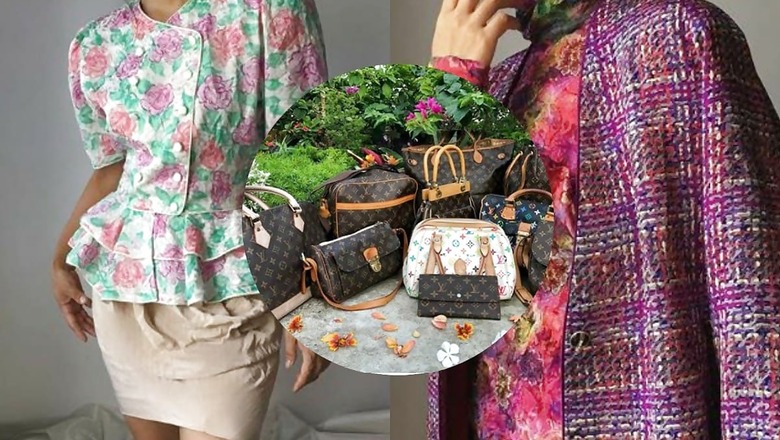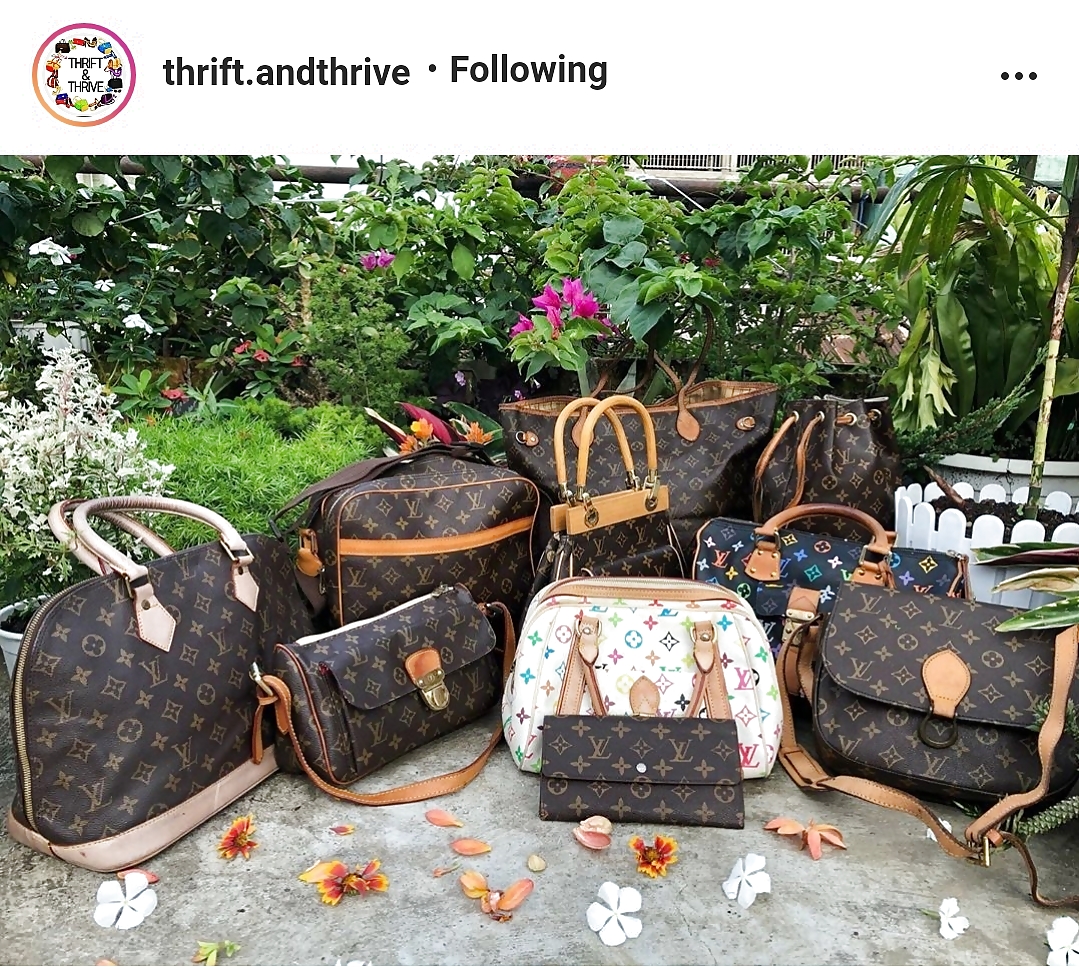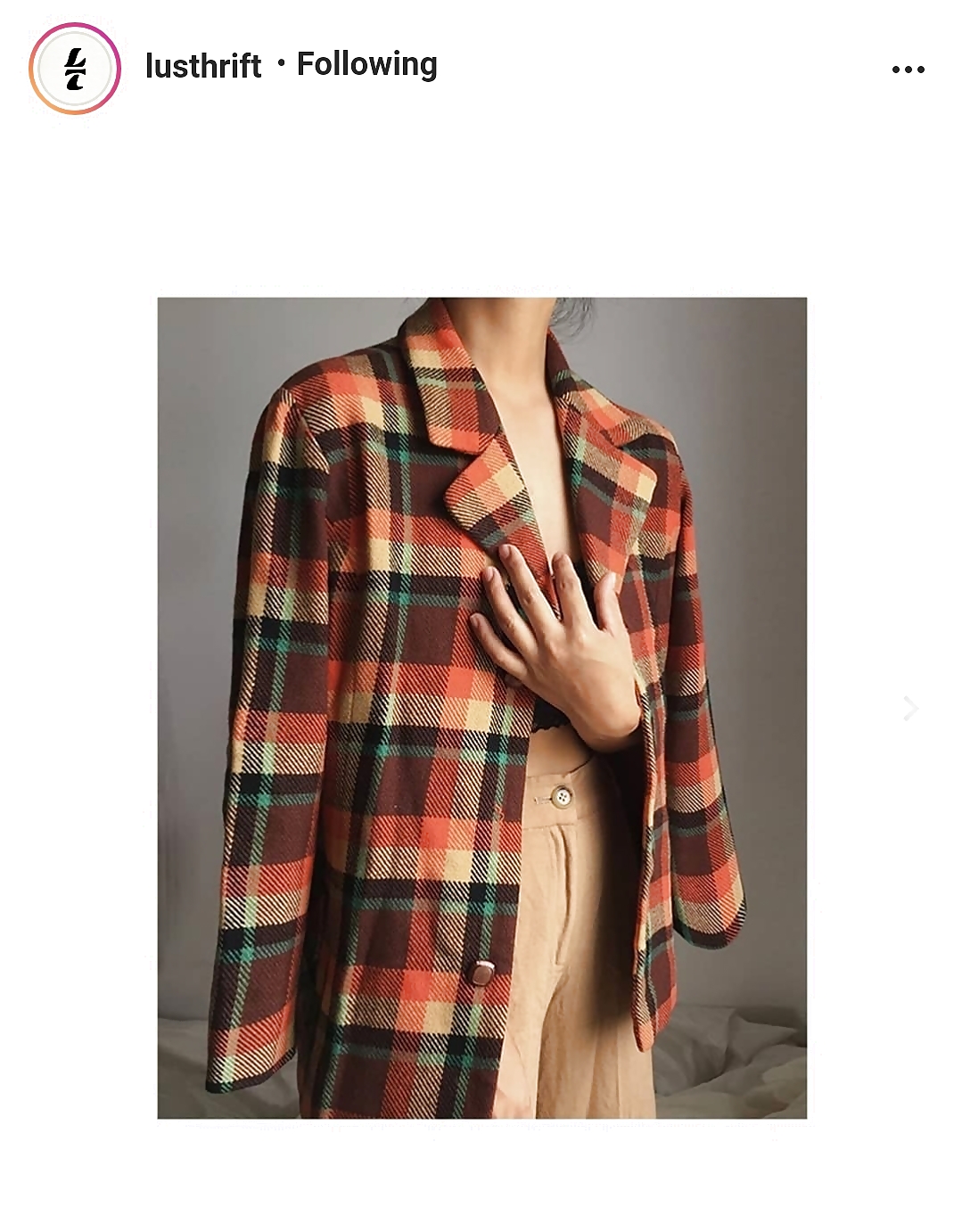
views
The years 2020 shows us more and more signs of how climate change can cause havoc to the planet. A large part of this is the fast fashion industry, where not only are chemicals used to create the garments and accessories, but many companies are infamous for exploiting their workers. Fast fashion also creates a vicious cycle, where the stylish but cheap garment degrades or goes out of style faster, making consumers buy more and more products.
While fighting fast fashion industries is a David Vs Goliath task, small and significant steps are being taken to change public opinion. Instagram thrift stores have emerged as the product of this consciousness. Even though the concept of thrifting isn’t new in itself, more thrift stores are cropping up on Instagram in 2020.

For Jake and Jenna, the owners of Thrift&Thrive, a store which deals primarily in thrifted and pre owned luxurious bags, the idea of starting a thrift store came when they saw many second-hand bags coming from Europe and other parts of Asia in the form of bales. The partners have been running their store for three years now, and sell authentic bags with trace-able codes. They also sell refurbished bags from authentic material from brands. from Gucci to Louis Vuitton, they have a wide range of variety, they hand-pick from these bales.
Talking about the importance of sustainable fashion, they said, “It wasn’t really a trend to shop for pre-loved, or thrifted items when we first started, but the trend has picked up from last year. Most of my fellow Indian have started to notice the difference they can make by choosing sustainable instead of fast fashion. We should let people know that even though (a product) is pre loved or thrifted it doesn’t mean it is inferior than first hand. Actually it’s the opposite as many thrifted items are vintage and often higher in value. Plus it’s the decision of sustainability which many fellow Indians are into now which I am super happy about.”
Another popular Instagram Thrift store is Lusthrift, a page that started in April of 2020 and deals with pre-loved, thrifted and upcycled clothing. According to LJ, the owner of Lusthrift, one of the reasons behind opening the store was to break the stigma behind second-hand clothing. “We initially thought that there were only a handful of people who were okay with the idea of wearing someone else’s old clothes. Pre-loved/second hand or vintage, these pieces belonged to someone before it came to us. It was surprisingly that things have changed drastically in the past years with people being more aware of the fact that reusing, re-wearing or recycling did more benefits than damage to our environment so if one can look cute while saving the planet. Why not?”

For LJ, who single-handedly runs the store, the Coronavirus crisis proved to be a hindrance. “Our situation caused a lot of problem in terms of sourcing. We couldn’t source for a long time and also with packages. There were lots of difficulties with packages not going to certain areas and had to hold them back. Also, if it did go, they took forever to reach our customers. Nonetheless, they reached eventually. Responses are great and everyone’s happy,” they said.
From collecting items, to shooting, washing and sanitising them for customers, the job of a store-owner is tedious. Hence they benefit from positive word of mouth from their customers. Saanika Jha, a photographer and filmmaker from Ahmedabad talked about her experience as a regular customer of thrift stores. She was introduced to thrift stores as a student in Budapest, where she got clothes and accessories of her taste in reasonable prices. “My experience has been wildly unproblematic. I was hesitant going into online thrift shopping because the ‘feel’ of something before buying it is so much so a priority for me but I let go because I was missing the experience so much. I am so glad I did. Also especially now with the Coronavirus it’s actually the only way anyway. I have had pieces come in from Bangalore and Manipur and so many places I never even thought my shopping experience could reach before all while sitting squat at home. It’s honestly romantic, somehow,” she said
Ananya Maloo, a publicist from Mumbai, says that even though the prices are the driving force behind her turning to thrift shops, she likes the idea of sustainability and doesn’t mind pre-loved clothes as long as they look new and can accomodate few extra wears. “I was really happy with the things I bought off the thrift shopping pages and the owners were very transparent with me regarding the pieces and if there were any defects I had to look out for. Luckily for me I got the things I was looking for on retail websites on these stores for cheap and was even happier when I knew of the brand they were from. It was a total win-win for me with the boxes of fashion and nominal rates both getting ticked off,” she said.
“The first time was definitely more of a trial and error. I was ready for anything and wasn’t honestly expecting a lot, but once I received the items it definitely changed my idea around thrift shopping and prompted me to do it again. Also the fact that I am harming the environment less in this process made me feel better about spending money on clothes. Corsets are my most favourite clothing items to look out for on insta thrift shops,” says Upasana, a Masters student from Delhi. She also said that she was initially skeptical about wearing clothes that were owned by someone else, especially during Coronavirus, but as long as the store owners take care of the hygiene, she is okay with the concept.
Vitica Ranga, a Makeup Artist from Delhi says she turned to thrift stores for ethical reasons. “I had been on the lookout for thrift stores in India due to ethical & environmental reasons, with fast fashion rapidly increasing, it’s doing a lot of damage to the environment and they don’t provide even their workers minimum wages.”
She added, “My experience has been amazing! Thrift stores are a great way for me to shop guilt free. Additionally , I get to support small businesses and most of them include a handwritten thank you which feels makes the whole experience so much more special and intimate!”
While many customers have had pleasant experiences, there are some who have questions regarding a page’s business module. A masters student from Delhi, who wishes to stay anonymous questions whether certain popular thrift pages sell their items to preferred customers. She says that thrifting has also become “a trend” where people have started piling up on these items, even when they do not need it which is antithetical to the purpose of thrifting.
She says, “There’s also this problem of “green washing” marketing. In the name of thrift or vintage items some stores ride up the price of pieces so much that it becomes as expensive as a new item from a store and it becomes easier and more economical for people to buy from fast fashion brands. It defeats the purpose of thrift shopping. Also if someone has to go out of their way and budget to get an item even if it’s second hand or vintage, then it doesn’t remain a sustainable choice anymore. Sustainable choices are ALWAYS supposed to be made as per what’s “possible” for an individual. I don’t think many people get it. But if you tell these stores they start justifying how much time, effort and money goes into sourcing items so it’s up to them how to price an item, which is fine but is it actually following the fundamentals of sustainability now?”
She furthers said that there have been instances of some thrift pages scamming their customers, even though these pages are very less in number. She also cited instances where a page got defensive and rude when a question about pricing and booking was raised. “Apart from this I do think Instagram thrift stores have become a great medium for people to get interesting pieces who might not have access to such stores in their city and shop during this pandemic. It also provides great support to these small businesses and helps people avoid shopping from fast fashion brands. I just think people should be more aware of the fundamentals of thrifting and the shops become more fair and professional,” she concluded.




















Comments
0 comment